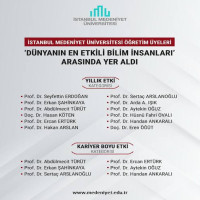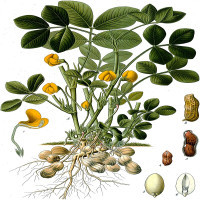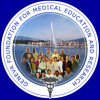Review
Systematic Reviews and Meta Analysis
Systematic Reviews and Meta Analysis
1. TARAXACUM OFFICINALE; TRADITIONAL AND EXPERIMENTAL BIOLOGICAL ACTIVITIESResearch Article
Aim & Scope
To be a reference journal in application areas such as Pharmacy, Medicine, Veterinary Medicine, Agriculture and sub-fields such as Biochemistry, Pharmacology, Microbiology, Pharmacognosy, Cancer Biology, Genetics and Evolution, which are within the basic field of Biology.
To become a periodical journal where original works can be published in the International Scientific Public Opinion, where science and ethics take place together.
Biological research areas such as Molecular Biology, Botany, Zoology, Genetics, Pharmacy, Pharmacology, Food Engineering, and Basic Medical Sciences, which embrace all Life Sciences (Medicine, Veterinary Medicine, Agriculture, etc.) and target interdisciplinary studies, will be included in the scope of this journal.
Our journal will not accept articles other than the basic field of Biology or the fields derived from it.
Author Guidelines
1. General Rules
Before submission of the new manuscript authors should consider the following general rules for preparation of the manuscript. Please read these instructions carefully and follow the guidelines strictly.
• Fonts: Important – Use Times or Times New Roman 12 point size only (other sizes as specified), and Symbol font for mathematical symbols (in the text and in the figures).
Justification should be set to full (or left only, if preferred).
Do not underline: Use italics, bold or bold italics instead.
Line spacing should be set at 2 (Double).
Leave a line space between paragraphs and sections.
Leave a line space between section titles and text.
Leave only one space after a full stop.
•Manuscripts must be typed on A4 (210 × 297 mm) paper, double-spaced throughout and with ample margins of at least 2.5 cm. All pages must be numbered consecutively. Starting with the title page as p.1, the text, which begins with p.2, is to be arranged in the following order: abstract, brief introduction, materials and methods, results, discussion, acknowledgements, references, figure legends, tables.
•The first page of the full manuscript must begin with the title of the paper centered on the page in 14 point Bold Title Case (title case means first letter of each main word capitalized), the names of the authors (Initials – followed by a period each – Family Name) with the main author’s name mentioned first, the names and locations of the authors’ affiliations (Title Case), and the e-mail address of the main author. The title page must provide the title in English, a short title of not more than 45 characters (including spaces) to be used as running head, up to five topical key words in English for subject indexing, the full postal address of the corresponding author to whom proofs will be sent. The title should be brief and should indicate the species studied. Subtitles are not encouraged.
•The abstract should not exceed 250 words, should be one paragraph and should be free of references and abbreviations. It should indicate clearly the scope and main conclusions of the paper.
•The introduction should give the pertinent background to the study and should explain why the work was done.
•The materials and methods (or methodology) should give essential details, including experimental design and statistical analysis.
•The results should present the findings of the research. They should be free from discussion. Results should be written in the past tense.
•The discussion should cover, but not simply repeat the new findings and should present the author's results in broader context of other work on the subject interpreting them with a minimum of speculation.
•The acknowledgements should be as brief as possible.
File Sizes
Manuscripts will be distributed to reviewers via the Web. However,
reviewers who use telephone modems may experience unacceptable download delays
if the files are too large. A number of simple tricks can be used to avoid unnecessarily
large files. Do not scan pages of text. Do not scan printed Figures unless no
original digital document exists. If a scanned figure is unavoidable, please
use Adobe PhotoShop or a similar program to edit the file and reduce the file
size (not necessarily the image size) as much as possible before submission.
For example, crop the picture to exclude surrounding "white space."
Do not carelessly use colour. Black and white line drawings or gray-scale
figures should not be saved as color documents; this will increase file sizes
without increasing the information content of the file. Do not use colour
unless absolutely needed to convey information.
2. Manuscript file format
We request to submit article in Microsoft Word format (.DOC). If you are using
another word processor please save final version of the manuscript (using 'Save
As' option of the file menu) as a Word document. In this case please double
check that the saved file can be opened in Microsoft Word. We cannot accept
Acrobat .PDF or any other text files.
2.1. Preparing the Manuscript
2.1.1. Research Articles
Research articles present original research and address a clearly stated specific hypothesis or question. Papers should provide novel approaches and new insights into the problem addressed. Research Article should arrange in the following order: abstract, brief introduction, materials and methods, results, discussion, acknowledgements, references, figures, tables.
2.1.1.1. Template for Research Article
The template consists of essential headings along with body text explaining what to include in each section. You should overwrite (or copy and paste) the body text with the corresponding section text for your article. Obviously, you should add other headings as needed.
Title (150 characters or fewer)
The title should be specific to the study yet concise, and
should allow sensitive and specific electronic retrieval of the article. It
should be comprehensible to readers outside your field. Avoid specialist
abbreviations if possible. Present this in title case, capitalizing all words
except for prepositions, articles, and conjunctions. Titles should also include
relevant information about the design of the study, e.g.: Television watching
and family dysfunction in medical journal editors: a case-control study.
Authors and Affiliations
Provide the first names or initials (if used), middle names or initials (if used), surnames, and affiliations—department, university or organization, city, state/province (if applicable), and country—for all authors. One of the authors should be designated as the corresponding author. If the article has been submitted on behalf of a consortium, all author names and affiliations should be listed at the end of the article.
Abstract
The abstract succinctly introduces the paper. We advise that it should not exceed 250–300 words. The abstract is conceptually divided into three sections. Background: include here a statement of the main research question. Methodology/Principal Findings. include here the techniques used without going into methodological detail, together with a summary of the most important findings with key numerical results given, with measures of error and not just p values. Conclusions/Significance: concisely summarize the study’s implications. Please do not include any citations in the abstract. Avoid specialist abbreviations if possible.
Introduction
The introduction should put the focus of the manuscript into a broader context. As you compose the introduction, think of readers who are not experts in this field. Include a brief review of the key literature. If there are relevant controversies or disagreements in the field, they should be mentioned so that a non-expert reader can delve into these issues further. The introduction should conclude with a brief statement of the overall aim of the experiments and a comment about whether that aim was achieved.
Materials and Methods
This section should provide enough detail to allow full replication of the study by suitably skilled investigators. Protocols for new methods should be included, but well-established protocols may simply be referenced. We encourage authors to submit, as separate supporting information files, detailed protocols for newer or less well-established methods. These are published online only, but are linked to the article and are fully searchable.
Results
The results section should provide details of all of the experiments that are required to support the conclusions of the paper. There is no specific word limit for this section. The section may be divided into subsections, each with a concise subheading. Large datasets, including raw data, should be submitted as supporting information files; these are published online alongside the accepted article. We advise that the results section be written in past tense.
Discussion
The discussion should spell out the major conclusions of the work along with some explanation or speculation on the significance of these conclusions. How do the conclusions affect the existing assumptions and models in the field? How can future research build on these observations? What are the key experiments that must be done? The discussion should be concise and tightly argued. Conclusions firmly established by the presented data, hypotheses supported by the presented data, and speculations suggested by the presented data should be clearly identified as such. The results and discussion may be combined into one section, if desired.
Acknowledgments
People who contributed to the work but do not fit criteria for authorship should be listed in the Acknowledgments, alongwith their contributions. It is the authors’ responsibility to ensure that anyone named in the acknowledgments agrees to being so named. Details of the funding sources that have supported the work should be confined to the funding declaration provided on submission. Do not include them in the acknowledgments.
References
Only published or accepted manuscripts should be included in the reference list. Meetings abstracts, conference talks, or papers that have been submitted but not yet accepted should not be cited. Limited citation of unpublished work should be included in the body of the text only. Because all references will be linked electronically as much as possible to the papers they cite, proper formatting of the references is crucial. Please read guide to authors carefully to prepare a list of references.
Figure Legends
The aim of the figure legend should be to describe the key messages of the figure, but the figure should also be discussed in the text. An enlarged version of the figure and its full legend will often be viewed in a separate window online, and it should be possible for a reader to understand the figure without switching back and forth between this window and the relevant parts of the text. Each legend should have a concise title of no more than 15 words. The legend itself should be succinct, while still explaining all symbols and abbreviations. Avoid lengthy descriptions of methods.
Tables
The table
title should be concise, no more than one sentence. The rest of the table
legend and any footnotes should be placed below the table. Footnotes can be
used to explain abbreviations.
Tables must be cell-based, such as would be produced in a spreadsheet program
or in Microsoft Word. Do not provide tables as graphic objects. Tables must be
no larger than one printed page (7inches x 9.5inches). Larger tables can be
published as online supporting information. Bold and italics formatting will be
preserved in the published version; however, more extensive formatting will be
lost. Do not include color, shading,
lines, rules, text boxes, tabs, returns, or pictures within the table.
2.1.2. Reviews/Mini-Reviews
Review articles are an attempt by one or more authors to sum up the current state of the research on a particular topic. Ideally, the author searches for everything relevant to the topic, and then sorts it all out into a coherent view of the “state of the art” as it now stands. Review Articles should inform about:
• the main researchers working in a field
• recent major advances and discoveries
• significant gaps in the research
• current debates
• future directions
Only review articles from the experts in relevant field will be considered for publication.
2.1.2.1. Template for Review Article
The template consists of essential headings along with body text explaining what to include in each section. You should overwrite (or copy and paste) the body text with the corresponding section text for your article. Obviously, you should add other headings as needed.
Title (150 characters or fewer)
The title
should be specific to the study yet concise, and should allow sensitive and
specific electronic retrieval of the article. It should be comprehensible to
readers outside your field. Avoid specialist abbreviations if possible. Present
this in title case, capitalizing all words except for prepositions, articles,
and conjunctions. Titles should also include relevant information about the
design of the study, e.g.: Television watching and family dysfunction in
medical journal editors: a case-control study.
Authors and Affiliations
Provide the first names or initials (if used), middle names or initials (if used), surnames, and affiliations—department, university or organization, city, state/province (if applicable), and country—for all authors. One of the authors should be designated as the corresponding author. If the article has been submitted on behalf of a consortium, all author names and affiliations should be listed at the end of the article.
Abstract
The abstract succinctly introduces the paper. We advise that it should not exceed 250–300 words. The abstract is conceptually divided into three sections. Background: include here a statement of the main research question. Methodology/Principal Findings. include here the techniques used without going into methodological detail, together with a summary of the most important findings with key numerical results given, with measures of error and not just p values. Conclusions/Significance: concisely summarize the study’s implications. Please do not include any citations in the abstract. Avoid specialist abbreviations if possible.
Introduction
The introduction should put the focus of the manuscript into a broader context. As you compose the introduction, think of readers who are not experts in this field. Include a brief review of the key literature. If there are relevant controversies or disagreements in the field, they should be mentioned so that a non-expert reader can delve into these issues further. The introduction should conclude with a brief statement of the overall aim of the experiments and a comment about whether that aim was achieved.
Rest of the Review Article
The required format for review articles is similar to that used for research articles, with the exception that headings such as "Methodolgy," "Results and Discussion," and "Conclusions" should be replaced with more appropriate headings, consistent with the contents of the article.
2.1.3. Short Communications
Short communication is for a concise, but independent report representing a significant contribution in the field. Short communication is not intended to publish preliminary results. But if these results are of exceptional interest and are particularly topical and relevant will be considered for publication. It should be no more than 2500 words, and could include two figures or tables. It should have at least 8 references. Short communications will also send for peer review.
2.1.3.1. Template for Short Communication
The template consists of essential headings along with body text explaining what to include in each section. You should overwrite (or copy and paste) the body text with the corresponding section text for your article. Obviously, you should add other headings as needed.
Short Communication should be no more than 2500 words, and could include two figures or tables. It should have at least 8 references.
Short communications must report completed work, not preliminary findings: they are an alternative format for describing smaller pieces of work.
Title (150 characters or fewer)
The title should be specific to the study yet concise, and
should allow sensitive and specific electronic retrieval of the article. It
should be comprehensible to readers outside your field. Avoid specialist
abbreviations if possible. Present this in title case, capitalizing all words
except for prepositions, articles, and conjunctions. Titles should also include
relevant information about the design of the study, e.g.: Television watching
and family dysfunction in medical journal editors: a case-control study.
Authors and Affiliations
Provide the first names or initials (if used), middle names or initials (if used), surnames, and affiliations—department, university or organization, city, state/province (if applicable), and country—for all authors. One of the authors should be designated as the corresponding author. If the article has been submitted on behalf of a consortium, all author names and affiliations should be listed at the end of the article.
Abstract
The abstract succinctly introduces the paper. We advise that it should not exceed 250–300 words. The abstract is conceptually divided into three sections. Background: include here a statement of the main research question. Methodology/Principal Findings. include here the techniques used without going into methodological detail, together with a summary of the most important findings with key numerical results given, with measures of error and not just p values. Conclusions/Significance: concisely summarize the study’s implications. Please do not include any citations in the abstract. Avoid specialist abbreviations if possible.
Key words:
Introduction
The introduction should put the focus of the manuscript into a broader context. As you compose the introduction, think of readers who are not experts in this field. Include a brief review of the key literature. If there are relevant controversies or disagreements in the field, they should be mentioned so that a non-expert reader can delve into these issues further. The introduction should conclude with a brief statement of the overall aim of the experiments and a comment about whether that aim was achieved.
Materials and Methods
This section should provide enough detail to allow full replication of the study by suitably skilled investigators. Protocols for new methods should be included, but well-established protocols may simply be referenced. We encourage authors to submit, as separate supporting information files, detailed protocols for newer or less well-established methods. These are published online only, but are linked to the article and are fully searchable.
Results
The results section should provide details of all of the experiments that are required to support the conclusions of the paper. There is no specific word limit for this section. The section may be divided into subsections, each with a concise subheading. Large datasets, including raw data, should be submitted as supporting information files; these are published online alongside the accepted article. We advise that the results section be written in past tense.
Discussion
The discussion should spell out the major conclusions of the work along with some explanation or speculation on the significance of these conclusions. How do the conclusions affect the existing assumptions and models in the field? How can future research build on these observations? What are the key experiments that must be done? The discussion should be concise and tightly argued. Conclusions firmly established by the presented data, hypotheses supported by the presented data, and speculations suggested by the presented data should be clearly identified as such. The results and discussion may be combined into one section, if desired.
Acknowledgments
People who contributed to the work but do not fit criteria for authorship should be listed in the Acknowledgments, along with their contributions. It is the authors’ responsibility to ensure that anyone named in the acknowledgments agrees to being so named. Details of the funding sources that have supported the work should be confined to the funding declaration provided on submission. Do not include them in the acknowledgments.
References
Only published or accepted manuscripts should be included in the reference list. Meetings abstracts, conference talks, or papers that have been submitted but not yet accepted should not be cited. Limited citation of unpublished work should be included in the body of the text only. Because all references will be linked electronically as much as possible to the papers they cite, proper formatting of the references is crucial. Please read guide to authors carefully to prepare a list of references.
Figure Legends
The aim of the figure legend should be to describe the key messages of the figure, but the figure should also be discussed in the text. An enlarged version of the figure and its full legend will often be viewed in a separate window online, and it should be possible for a reader to understand the figure without switching back and forth between this window and the relevant parts of the text. Each legend should have a concise title of no more than 15 words. The legend itself should be succinct, while still explaining all symbols and abbreviations. Avoid lengthy descriptions of methods.
Tables
The table
title should be concise, no more than one sentence. The rest of the table
legend and any footnotes should be placed below the table. Footnotes can be
used to explain abbreviations.
Tables must be cell-based, such as would be produced in a spreadsheet program
or in Microsoft Word. Do not provide tables as graphic objects. Tables must be
no larger than one printed page (7inches x 9.5inches). Larger tables can be
published as online supporting information. Bold and italics formatting will be
preserved in the published version; however, more extensive formatting will be
lost. Do not include color, shading,
lines, rules, text boxes, tabs, returns, or pictures within the table.
2.1.4. Research Note
A technical note is an article giving a brief description of a technique or procedure. It may also refer to the modification of a technique, procedure or equipment of interest to the journal. It should be no more than 2500 words, and could include two figures or tables. It should have at least 8 references. Technical notes will also send for peer review
2.1.4.1. Template for Technical Notes
Technical Notes are concise but complete descriptions of a limited investigation, which will not be included in a later paper, describing some innovative technical aspects of methods related to the topic of the selected journal. Technical Notes should be as completely documented as an Original Research Paper, with special attention to the description of experimental procedures employed.
The template consists of essential headings along with body text explaining what to include in each section. You should overwrite (or copy and paste) the body text with the corresponding section text for your article. Obviously, you should add other headings as needed.
Title (150 characters or fewer)
The title
should be specific to the study yet concise, and should allow sensitive and
specific electronic retrieval of the article. It should be comprehensible to
readers outside your field. Avoid specialist abbreviations if possible. Present
this in title case, capitalizing all words except for prepositions, articles,
and conjunctions. Titles should also include relevant information about the
design of the study, e.g.: Television watching and family dysfunction in
medical journal editors: a case-control study.
Authors and Affiliations
Provide the first names or initials (if used), middle names or initials (if used), surnames, and affiliations—department, university or organization, city, state/province (if applicable), and country—for all authors. One of the authors should be designated as the corresponding author. If the article has been submitted on behalf of a consortium, all author names and affiliations should be listed at the end of the article.
Authors and Contribution
Authors are strongly encouraged to include a statement in the end notes to specify the actual contribution of each coauthor to the completed work. Science Alert allows two coauthors to be specified as having contributed equally to the work being described. Author contribution statement should be clear like the following example:
Example
S.C.W., P.R.J.B., P.V.W. and I.K.T developed the concept and designed experiments. S.C.W. and S.G. performed P. infestans transformations and plant inoculations. P.C.B. carried out confocal microscopy and advised on cell biology. S.C.W. performed GUS assays and light microscopy. A.O.A. and J.G.M. quantified gene expression. Antibody detection of tagged transformants was performed by I.H. and S.C. L.M., J.G.M., E.M.G. and M.R.A. carried out experiments with P. atrosepticum. L.P. conducted all bioinformatics analyses.
Abstract
The abstract succinctly introduces the paper. We advise that it should not exceed 250–300 words. The abstract is conceptually divided into three sections. Background: include here a statement of the main research question. Methodology/Principal Findings. include here the techniques used without going into methodological detail, together with a summary of the most important findings with key numerical results given, with measures of error and not just p values. Conclusions/Significance: concisely summarize the study’s implications. Please do not include any citations in the abstract. Avoid specialist abbreviations if possible.
Introduction
The introduction should put the focus of the manuscript into a broader context. As you compose the introduction, think of readers who are not experts in this field. Include a brief review of the key literature. If there are relevant controversies or disagreements in the field, they should be mentioned so that a non-expert reader can delve into these issues further. The introduction should conclude with a brief statement of the overall aim of the experiments and a comment about whether that aim was achieved.
Materials and Methods
This section should provide enough detail to allow full replication of the study by suitably skilled investigators. Protocols for new methods should be included, but well-established protocols may simply be referenced. We encourage authors to submit, as separate supporting information files, detailed protocols for newer or less well-established methods. These are published online only, but are linked to the article and are fully searchable.
Results
The results section should provide details of all of the experiments that are required to support the conclusions of the paper. There is no specific word limit for this section. The section may be divided into subsections, each with a concise subheading. Large datasets, including raw data, should be submitted as supporting information files; these are published online alongside the accepted article. We advise that the results section be written in past tense.
Discussion
The discussion should spell out the major conclusions of the work along with some explanation or speculation on the significance of these conclusions. How do the conclusions affect the existing assumptions and models in the field? How can future research build on these observations? What are the key experiments that must be done? The discussion should be concise and tightly argued. Conclusions firmly established by the presented data, hypotheses supported by the presented data, and speculations suggested by the presented data should be clearly identified as such. The results and discussion may be combined into one section, if desired.
Acknowledgments
People who contributed to the work but do not fit criteria for authorship should be listed in the Acknowledgments, along with their contributions. It is the authors’ responsibility to ensure that anyone named in the acknowledgments agrees to being so named. Details of the funding sources that have supported the work should be confined to the funding declaration provided on submission. Do not include them in the acknowledgments.
References
Only published or accepted manuscripts should be included in the reference list. Meetings abstracts, conference talks, or papers that have been submitted but not yet accepted should not be cited. Limited citation of unpublished work should be included in the body of the text only. Because all references will be linked electronically as much as possible to the papers they cite, proper formatting of the references is crucial. Please read guide to authors carefully to prepare a list of references.
Figure Legends
The aim of the figure legend should be to describe the key messages of the figure, but the figure should also be discussed in the text. An enlarged version of the figure and its full legend will often be viewed in a separate window online, and it should be possible for a reader to understand the figure without switching back and forth between this window and the relevant parts of the text. Each legend should have a concise title of no more than 15 words. The legend itself should be succinct, while still explaining all symbols and abbreviations. Avoid lengthy descriptions of methods.
Tables
The table
title should be concise, no more than one sentence. The rest of the table
legend and any footnotes should be placed below the table. Footnotes can be
used to explain abbreviations.
Tables must be cell-based, such as would be produced in a spreadsheet program
or in Microsoft Word. Do not provide tables as graphic objects. Tables must be
no larger than one printed page (7inches x 9.5inches). Larger tables can be
published as online supporting information. Bold and italics formatting will be
preserved in the published version; however, more extensive formatting will be
lost. Do not include color, shading,
lines, rules, text boxes, tabs, returns, or pictures within the table.
2.1.5. Letters to the Editor
This section is for discussion of topical scientific matters, including those published in the journal and for miscellaneous contributions.
The letter should be submitted via online submission system.
A galley proof will be provided to the author before the scientific letter is available for all audiences.
Ethical Principles and Publication Policy
1.Zeugma Biological Science dergimiz yılda 3 kez yayımlanan hakemli bir dergidir. Dergimizde; Eczacılık, Tıp, Veterinerlik, Ziraat gibi uygulama alanları ve Biyokimya, Farmakoloji, Mikrobiyoloji, Famakognozi, Kanser Biyolojisi, Genetik ve Evrim alanlarının kapsamına giren özgün araştırma makaleleri, kısa makaleler, derlemeler yayımlanabilir.
2.Derginin yayıncısı, editörü ve yayın kurulu yazarların belirtmiş olduğu görüş ve düşünceler ile doğabilecek etik ihlallerinin sorumluluğunu kabul etmekle yükümlü olmayıp dergide yer alan makale ve yazıların sorumluluğu yazar(lar)ına aittir.
3.Dergiye yayımlanmak üzere gönderilen çalışmalar öncelikle şekil/yazım şartları bakımından ön değerlendirmeye alınır. Yazım kuralları itibariyle şartları sağlamayan çalışmalar hakemlere gönderilmez. Şartlara uygun olan çalışmalar, içerik açısından incelenmek üzere en az iki hakeme gönderilir. Makaleyi değerlendiren hakemlerin kimlikleri hakkında yazarlara, gönderilen makalenin kime ait olduğu konusunda da hakemlere bilgi verilmez. Hakem raporları gizlidir. Hakemlerden olumlu rapor alamayan makaleler yayımlanmaz ve yazarına iade edilmez; bu konuda idari ve adli sorumluluk kabul edilmez. Hakemler tarafından düzeltme istenen yazılar ise gerekli değişiklikler için yazar(lar)a geri gönderilir. Düzeltilmiş metni belirtilen süre içerisinde dergiye ulaştırmak yazar(lar)ın sorumluluğundadır.
4.Dergide yayımlanacak olan eserler, daha önce bir başka dergide yayımlanmamış, yayımlanmak üzere gönderilmemiş ya da yayım için kabul edilmemiş olmalıdır. Herhangi bir bilimsel toplantıda sunulmuş ve yayımlanmamış yazılarda, toplantının adı, yeri ve tarihi belirtilmelidir.
5. Dergimiz herhangi bir yayın ücreti talep etmemektedir.
Price Policy
Publishing, reading and downloading the articles in Zeugma Biological Science is free of charge, no fee is charged for any transaction. Likewise, no fee is charged during the referee evaluation process.
Indexes
Journal Boards
Editor in Chief

Editorial Board

I have completed my PhD in (Horticulture) from University of Horticultural Sciences, Bagalkot with specialization in Medicinal and Aromatic plants, and refined my skills within the rural community in Syria; then combined my scientific and practical approach, trying to enable women achieving more sustainable development outcomes.
Working with UNDP as a trainer in few programs, and making e-book about liquid fertilizer from natural resources enable me to support the concept of sustainability.
Also, being as associated partner in” Traditional knowledge and innovative approaches project” at the university of Rostock – Germany, expanded my horizon about recent solutions for agriculture challenges. Now, I am Faculty member at Al-Hawash Private University- College of Cosmetology.



Gulfaraz Khan is professor of viral pathology and former Chair of the Department of Microbiology & Immunology at the College of Medicine and Health Sciences, UAE University. He received his undergraduate and postgraduate training in London (London School of Hygiene and Tropical Medicine, and St Bartholomew’s Hospital Medical College). He did his postdoctoral training in the Laboratory of the late Prof David Thorley-Lawson at Tufts University School of Medicine, Boston, followed by senior postdoctoral fellowship in the Laboratory of Prof Ruth Jarrett at LRF Virus Centre, University of Glasgow, UK. He is Fellow of the Royal College of Pathologists (UK) and has held faculty positions in universities in UK before moving to his current post in UAE. He has extensive experience in teaching and supervising undergraduate and post graduate students. In recognition of his teaching, he received the UAEU College of Medicine and Health Sciences Teaching Award on two separate occasions (2013 & 2017).
Prof Khan’s research interests are in viral pathology, virology and viral infections of public health concern. He has published over 120 articles in peer‐reviewed international journals (Google Scholar: H‐ index: 57, i10‐index: 99, total number of citations: over 60,000). He has also written 1 book and 9 book chapters (including the 4 volume Encyclopedia of Infection and Immunity, published by Elsevier in 2022). Additionally, his research has led to one US Patent.
In recognition of his research, Dr Khan has received a numerous awards, including the UAEU College of Medicine and Health Sciences Award for Excellence in Research (2013 & 2017), University Award for Excellence in Scholarship (2017), Outstanding Service Award During COVID-19 (2020) and several certificates of achievement for publishing in top 1%, 5% and 10% journals. In 2017, Dr Khan was a nominee for the UAE Prime Minister’s Medal for Scientific Excellence, and recently (2021), he was listed in Stanford’s Top 2% Scientists in the World (in two separate categories) for the past 3 years. Dr Khan serves on various national and international committees, including: UAE National Immunization Technical Advisory Group, UAE National COVID-19 Research Committee, and the Sheikh Hamdan Scientific Awards Committee. At the international level, he is member of the MENA Regional Advisory Board for US NIH-NIAID, and member of the editorial board of several journals, including PloS One and Virology Journal.

Auto-generated board - Please Edit This Title

Reviewer Board

English




Graduated from Istanbul University Cerrahpasa Medical Faculty, Ph.D. in Akdeniz University School of Medicine worked in Universita Degli Studi di Siena in Italy and currently works as a lecturer. His research interests are based on neuroanatomy, neurochemical anatomy, dissection based cadaver studies, cadaver dissection, skull base, skull, bones. He is also involved in teaching master and doctorate students in the field of Neuroscience PhD.









Academic Experience: Yalova University Lecturer (2012-2015)

Dr. Öğr. Üyesi Bahadır Törün, Hakkari Üniversitesi Lisansüstü Eğitim Enstitüsü'nde Biyoloji Anabilim Dalı'nda görev yapmaktadır. Aynı zamanda enstitüde müdür yardımcılığı görevini üstlenmektedir. Uzmanlık alanları arasında hayvan hücresi ve moleküler biyoloji, mikrobiyoloji ve mikrobiyal genetik bulunmaktadır. Akademik çalışmaları, mikrobiyal hava kalitesi, biyofilm oluşturan mantarların morfolojik ve moleküler tanımlanması ve inülinaz üretiminin optimizasyonu gibi konuları içermektedir. Dr. Törün, Doğu Fen Bilimleri Dergisi'nde alan editörü olarak görev yapmaktadır ve çeşitli dergilerde hakemlik yapmıştır. Ayrıca, Erasmus programı kapsamında Biyoloji Anabilim Dalı bölüm koordinatörlüğü görevini yürütmektedir.

















 Web
Web



:
5052626606
Telefon (İş)
Çanakkale Onsekiz Mart Ünversitesi,Çanakkale Teknik Bilimler
Meslek Yüksek Okulu, Gıda İşleme Bölümü, Gıda Kalite
Kontrolü ve Analizi Programı, Terzioğlu Yerleşkesi 17020,
ÇANAKKALE (Beldemiz Sitesi Üstü)
E-Posta Adresi : mehmetpiskin@comu.edu.tr
Adres
:
:
2862181800-
Telefon (Cep)
MEHMET PİŞKİN
DOÇENT
Öğrenim Bilgisi
2009 FEN BİLİMLERİ ENSTİTÜSÜ/ORGANİK KİMYA (DR)
Tez adı: 2H-1-benzopiran-2-on türevi ftalosiyanin bileşiklerinin sentezi ve yapılarının
aydınlatılması (2012) Tez Danışmanı:(MUSTAFA BULUT)
Doktora MARMARA ÜNİVERSİTESİ
4/Temmuz/2011
2001 FEN BİLİMLERİ ENSTİTÜSÜ/KİMYA (YL) (TEZLİ)
Tez adı: Bifenil türevi fosfazen ile 1,3-propandiolün reaksiyonu (2002) Tez Danışmanı:(ADEM
KILIÇ)
Yüksek Lisans GEBZE TEKNİK ÜNİVERSİTESİ
26/Ağustos/2002
1993 FEN-EDEBİYAT FAKÜLTESİ/KİMYA PR. Lisans FIRAT ÜNİVERSİTESİ
3/Temmuz/1997
Akademik Görevler
DOÇENT
ÇANAKKALE ONSEKİZ MART ÜNİVERSİTESİ/ÇANAKKALE TEKNİK BİLİMLER MESLEK
YÜKSEKOKULU/GIDA İŞLEME BÖLÜMÜ/GIDA KALİTE KONTROLÜ VE ANALİZİ PR.
(2014-2019 Doktora Öğretim Üyesi) 2019
Projelerde Yaptığı Görevler:
2H 1 BENZOPİRAN 2 ON TÜREVİ FTALOSİYANİN BİLEŞİKLERİNİN SENTEZİ VE YAPILARININ
AYDINLATILMASI, Yükseköğretim Kurumları tarafından destekli bilimsel araştırma projesi,
Araştırmacı:PİŞKİN MEHMET,Yürütücü:BULUT MUSTAFA, , 11/09/2008 - 11/07/2010 (ULUSAL)
1.
Fotodinamik Terapide Fotoduyarlaştırıcı Olarak Kullanabilecek Yeni Direkt Konjuge Ftalosiyanin
Bileşiklerinin Sentezi Fotofiziksel ve Fotokimyasal Özelliklerinin İncelenmesi, -Tübitak 3001,
Danışman:DURMUŞ MAHMUT,Yürütücü:PİŞKİN MEHMET, , 15/07/2015 - 27/12/2018 (ULUSAL)
2.
Merkezinde Ağır Metal İyonu Olarak KurşunII İçeren Yeni Ftalosiyanin Kompleksinin Sentezi ve
Spektroskopik Özelliklerinin Belirlenmesi, Yükseköğretim Kurumları tarafından destekli bilimsel
araştırma projesi, Araştırmacı;Fatih Mutlu, Araştırmacı;ÖMER FARUK ÖZTÜRK, Yürütücü;MEHMET
PİŞKİN, , 14/12/2018 - 14/05/2019 (ULUSAL)
3.
YENİ ÇÖZÜNÜR FTALOSİYANİN BİLEŞİKLERİN SENTEZİ, KARAKTERİSAZYONU VE SPEKTROSKOPİK
ÖZELLİKLERİNİN İNCELENMESİ, Yükseköğretim Kurumları tarafından destekli bilimsel araştırma
projesi, Araştırmacı;Fatih Mutlu, Araştırmacı;ÖMER FARUK ÖZTÜRK, Yürütücü;MEHMET
PİŞKİNYürütücü;MEHMET PİŞKİN, , 30/07/2018 - 14/05/2019 (ULUSAL)
4.
1
Ödüller
1. 2016-Akademik Teşvik Ödülü, ÇANAKKALE ONSEKİZ MART ÜNİVERSİTESİ, 2016
Dersler * Öğrenim Dili Ders Saati
2020-2021
Önlisans
Su Analizi Türkçe 2
İş Sağlığı ve Güvenliği Türkçe 2
Yağ Analizi Türkçe 3
Kimya I Türkçe 2
Laboratuvar Tekniği I Türkçe 3
Mesleki Matematik I Türkçe 2
Yüksek Lisans
Uzmanlık Alan Dersi Türkçe 10
Çalışma Yaşamında Özel Risk Grupları Türkçe 3
Seminer Türkçe 2
2019-2020
Önlisans
Araştırma Yöntem ve Teknikleri Türkçe 2
Kimya I Türkçe 2
Laboratuvar Tekniği I Türkçe 3
Yağ Analizi Türkçe 3
İş Sağlığı ve Güvenliği Türkçe 2
Mesleki Matematik II Türkçe 2
Su Analizi Türkçe 2
Kimya II Türkçe 2
Laboratuvar Tekniği II Türkçe 3
Yüksek Lisans
Seminer Türkçe 2
Uzmanlık Alan Dersi Türkçe 8
Etiketleme ve İşaretleme Türkçe 3
Endüstriyel İş Kazaları Türkçe 3
2
Çalışma Yaşamında Özel Risk Grupları Türkçe 3
Endüstriyel İş Kazaları Türkçe 3
2018-2019
Önlisans
Süt ve Ürünleri Analizi II Türkçe 4
Mesleki Matematik I Türkçe 2
Araştırma Yöntem ve Teknikleri Türkçe 2
Süt Ürün Analizi Türkçe 4
Kimya II Türkçe 2
Yağ Analizi Türkçe 3
İş Sağlığı ve Güvenliği Türkçe 2
Kimya I Türkçe 2
Su Analizi Türkçe 2
Laboratuvar Tekniği II Türkçe 3
Yüksek Lisans
Seminer Türkçe 2
Uzmanlık Alan Dersi Türkçe 8
Etiketleme ve İşaretleme Türkçe 3
Eserler
Uluslararası hakemli dergilerde yayımlanan makaleler:
1. PİŞKİN MEHMET, ÖZTÜRK ÖMER FARUK, ODABAŞ ZAFER (2020). Determination of photophysical,
photochemical and spectroscopic properties of novel lead(II) phthalocyanines. POLYHEDRON, 182,
Doi: 10.1016/j.poly.2020.114480 (Yayın No: 6874183)
2. Capkin Aylin,PİŞKİN MEHMET,DURMUŞ MAHMUT,BULUT MUSTAFA (2020). Spectroscopic,
photophysical and photochemical properties of newly metallo-phthalocyanines containing coumarin
derivative. JOURNAL OF MOLECULAR STRUCTURE, 1213, Doi: 10.1016/j.molstruc.2020.128145
(Yayın No: 6782765)
3. PİŞKİN MEHMET,CANPOLAT ERDAL,ÖZTÜRK ÖMER FARUK (2019). The new zinc phthalocyanine
having high singlet oxygen quantum yield substituted with new benzenesulfonamide derivative
groups containing schiff base. Journal of Molecular Structure, 1202, 127181, Doi:
10.1016/j.molstruc.2019.127181 (Yayın No: 5961827)
4. Mutlu Fatih,PİŞKİN MEHMET,CANPOLAT ERDAL,ÖZTÜRK ÖMER FARUK (2019). The new zinc(II)
phthalocyanine directly conjugated with 4-butylmorpholine units: Synthesis, characterization,
thermal, spectroscopic and photophysical properties. Journal of Molecular Structure, 1201,
127169, Doi: 10.1016/j.molstruc.2019.127169 (Yayın No: 5961732)
5. DEMİRBAŞ ÜMİT,PİŞKİN MEHMET,BAYRAK RIZA,DURMUŞ MAHMUT,KANTEKİN HALİT (2019).
Zinc(II) and lead(II) phthalocyanines bearing thiadiazole substituents: Synthesis, characterization,
photophysical and photochemical properties. Journal of Molecular Structure, 1197, 594-602., Doi:
10.1016/j.molstruc.2019.07.091 (Yayın No: 5961636)
6. ŞAHAL HAKAN,PİŞKİN MEHMET,ORGAN Gülen Atiye,ÖZTÜRK ÖMER FARUK,KAYA
MEHMET,CANPOLAT ERDAL (2018). Zinc(II) phthalocyanine containing Schiff base containing
sulfonamide: synthesis, characterization, photophysical, and photochemical properties. Journal of
Coordination Chemistry, 361, 1-13., Doi: 10.1080/00958972.2018.1524140 (Yayın No: 4638169)
7. KANTEKİN HALİT,Yalazan Halise,KAHRİMAN NURAN,ERTEM BEYTULLAH,Serdaroğlu Vildan,PİŞKİN
MEHMET,DURMUŞ MAHMUT (2018). New peripherally and non-peripherally tetra-substituted
metal-free, magnesium(II) and zinc(II) phthalocyanine derivatives fused chalcone units: Design,
synthesis, spectroscopic characterization, photochemistry and photophysics. Journal of
3
Uluslararası hakemli dergilerde yayımlanan makaleler:
Photochemistry and Photobiology A: Chemistry, 361, 1-11., Doi:
10.1016/j.jphotochem.2018.04.034 (Yayın No: 4519423)
8. PİŞKİN MEHMET,CAN NURSEL,ODABAŞ ZAFER,ALTINDAL AHMET (2018). Toluene vapor sensing
characteristics of novel copper(II), indium(III), mono-lutetium(III) and tin(IV) phthalocyanines
substituted with 2,6-dimethoxyphenoxy bioactive moieties. Journal of Porphyrins and
Phthalocyanines, 22(01n03), 189-197., Doi: 10.1142/S1088424617500900 (Yayın No: 4624004)
9. PİŞKİN MEHMET,ÖZTÜRK NACİYE,DURMUŞ MAHMUT (2017). Spectroscopic and electrochemical
behavior of the novel tetra-2-methyl-pyrazinoporphyrazines. Journal of Molecular Structure,
1149, 893-899., Doi: 10.1016/j.molstruc.2017.08.053 (Yayın No: 3717175)
10. ÇETİNKAYA MEHMET,PİŞKİN MEHMET,ALTUN SELÇUK,ODABAŞ ZAFER,DURMUŞ MAHMUT (2017).
Do the positions of trimethyl groups on phthalocyanine photosensitizers improve their
photochemical and photophysical properties?. Journal of Photochemistry and Photobiology A:
Chemistry, 335, 17-25., Doi: 10.1016/j.jphotochem.2016.11.009 (Yayın No: 3717230)
11. DEMİRBAŞ ÜMİT,PİŞKİN MEHMET,AKÇAY HAKKI TÜRKER,BARUT BURAK,DURMUŞ
MAHMUT,KANTEKİN HALİT (2017). Synthesis, characterisation, photophysical and photochemical
properties of free-base tetra-(5-chloro-2-(2,4-dichlorophenoxy)phenoxy)phthalocyanine and
respective zinc(II) and lead(II) complexes. Synthetic Metals, 223, 166-171., Doi:
10.1016/j.synthmet.2016.12.004 (Yayın No: 3717315)
12. DEMİRBAŞ ÜMİT,PİŞKİN MEHMET,AKÇAY HAKKI TÜRKER,BARUT BURAK,DURMUŞ
MAHMUT,KANTEKİN HALİT (2017). Synthesis, characterisation, photophysical and photochemical
properties of free-base tetra-(5-chloro-2-(2,4-dichlorophenoxy)phenoxy)phthalocyanine and
respective zinc(II) and lead(II) complexes. Synthetic Metals, 223, 166-171., Doi:
10.1016/j.synthmet.2016.12.004 (Yayın No: 4822678)
13. ŞAHİN SAFİNAZ,PİŞKİN MEHMET,ALTUN SELÇUK,DURMUŞ MAHMUT,ODABAŞ ZAFER (2016). First
investigation on the photophysical and photochemical properties of azo bridged phthalocyanine
photosensitizers. Journal of Luminescence, 180, 219-223., Doi: 10.1016/j.jlumin.2016.08.039
(Yayın No: 2960670)
14. DEMİRBAŞ ÜMİT,PİŞKİN MEHMET,BARUT BURAK,BAYRAK RIZA,DURMUŞ MAHMUT,KANTEKİN
HALİT (2016). Metal free zinc II and lead II phthalocyanines functioning with 3 2H benzo d 1 2
3 triazol 2 yl 4 hydroxyphenethyl methacrylate groups Synthesis and investigation of
photophysical and photochemical properties. Synthetic Metals, 220, 276-285., Doi:
10.1016/j.synthmet.2016.06.026 (Yayın No: 2960631)
15. DEMİRBAŞ ÜMİT,PİŞKİN MEHMET,BAYRAK RIZA,ÜNLÜER DİLEK,DÜĞDÜ ESRA,DURMUŞ
MAHMUT,KANTEKİN HALİT (2016). The determination of photophysical and photochemical
parameters of novel metal free zinc II and lead II phthalocyanines bearing 1 2 4 triazole groups.
Synthetic Metals, 219, 76-82., Doi: 10.1016/j.synthmet.2016.05.008 (Yayın No: 2959857)
16. AlSohaimi Bander Roshadan,PİŞKİN MEHMET,Ateyatallah Aljuhani,AlRaqa Shaya Y,DURMUŞ
MAHMUT (2016). Enhancing photophysical and photochemical properties of zinc II
phthalocyanine dyes by substitution of triptycene moieties. Journal of Luminescence, 173, 82-88.,
Doi: 10.1016/j.jlumin.2015.12.053 (Yayın No: 2582469)
17. Alamin Ali Haytham Elzien,PİŞKİN MEHMET,ALTUN SELÇUK,DURMUŞ MAHMUT,ODABAŞ ZAFER
(2016). Synthesis characterization photophysical and photochemical properties of novel zinc II
and indium III phthalocyanines containing 2 phenylphenoxy units. Journal of Luminescence, 173,
113-119., Doi: 10.1016/j.jlumin.2015.12.010 (Yayın No: 2582458)
18. GÜREL EKREM,PİŞKİN MEHMET,ALTUN SELÇUK,ODABAŞ ZAFER,DURMUŞ MAHMUT (2016). The
novel mesityloxy substituted metallo phthalocyanine dyes with long fluorescence lifetimes and
high singlet oxygen quantum yields. Journal of Photochemistry and Photobiology A: Chemistry,
315, 42-51., Doi: 10.1016/j.jphotochem.2015.09.009 (Yayın No: 2582432)
19. AlSohaimi Bandar R,PİŞKİN MEHMET,Ghanem Bader S,AlRaqa Shaya Y,DURMUŞ MAHMUT (2016).
Efficient singlet oxygen generation by triptycene substituted A3B type zinc II phthalocyanine
photosensitizers. Tetrahedron Letters, 57(3), 300-304., Doi: 10.1016/j.tetlet.2015.12.004 (Yayın
No: 2582443)
20. PİŞKİN MEHMET (2016). The novel 2 6 dimethoxyphenoxy substituted phthalocyanine dyes
having high singlet oxygen quantum yields. Polyhedron, 104, 17-24., Doi:
10.1016/j.poly.2015.11.017 (Yayın No: 2582450)
21. ÇAKIR VOLKAN,Çakır Dilek,PİŞKİN MEHMET,DURMUŞ MAHMUT,BIYIKLIOĞLU ZEKERİYA (2015).
New peripherally and non peripherally tetra substituted water soluble zinc phthalocyanines
Synthesis photophysics and photochemistry. Journal of Organometallic Chemistry, 783, 120-
129., Doi: 10.1016/j.jorganchem.2015.02.021 (Yayın No: 2097393)
22. Ghanem Bader S,PİŞKİN MEHMET,DURMUŞ MAHMUT,Mohamed E El Khouly,Shaya Y Al Raqa
(2015). Synthesis photophysical and photochemical properties of novel phthalocyanines
substituted with triptycene moieties. Polyhedron, 90, 85-90., Doi: 10.1016/j.poly.2015.01.037
4
Uluslararası hakemli dergilerde yayımlanan makaleler:
(Yayın No: 2099122)
23. GÜREL EKREM,PİŞKİN MEHMET,ALTUN SELÇUK,ODABAŞ ZAFER,DURMUŞ MAHMUT (2015).
Synthesis characterization and investigation of the photophysical and photochemical properties of
highly soluble novel metal free zinc II and indium III phthalocyanines substituted with 2 3 6
trimethylphenoxy moieties. Dalton Trans., 44(13), 6202-6211., Doi: 10.1039/C5DT00304K (Yayın
No: 2539728)
24. ÇAKIR VOLKAN,Çakır Dilek,PİŞKİN MEHMET,DURMUŞ MAHMUT,BIYIKLIOĞLU ZEKERİYA (2014).
Water soluble peripheral and non peripheral tetrasubstituted zinc phthalocyanines Synthesis
photochemistry and bovine serum albumin binding behavior. Journal of Luminescence, 154, 274-
284., Doi: 10.1016/j.jlumin.2014.04.030 (Yayın No: 2109845)
25. NAS ASİYE,DEMİRBAŞ ÜMİT,PİŞKİN MEHMET,DURMUŞ MAHMUT,KANTEKİN HALİT (2014). The
photophysical and photochemical properties of new unmetallated and metallated phthalocyanines
bearing four 5 chloroquinolin 8 yloxy substituents on peripheral sites. Journal of Luminescence,
145, 635-642., Doi: 10.1016/j.jlumin.2013.07.056 (Yayın No: 2109931)
26. AKTAŞ AYŞE,PİŞKİN MEHMET,DURMUŞ MAHMUT,BIYIKLIOĞLU ZEKERİYA (2014). Synthesis
photophysical and photochemical properties of zinc phthalocyanines bearing fluoro functionalized
substituents. Journal of Luminescence, 145, 899-906., Doi: 10.1016/j.jlumin.2013.09.019 (Yayın
No: 2110139)
27. AKÇAY HAKKI TÜRKER,PİŞKİN MEHMET,DEMİRBAŞ ÜMİT,BAYRAK RIZA,DURMUŞ
MAHMUT,MENTEŞE EMRE,KANTEKİN HALİT (2013). Novel triazole bearing zinc II and magnesium
II metallo phthalocyanines Synthesis characterization photophysical and photochemical
properties. Journal of Organometallic Chemistry, 745746, 379-386., Doi:
10.1016/j.jorganchem.2013.08.029 (Yayın No: 2110302)
28. DEMİRBAŞ ÜMİT,BAYRAK RIZA,PİŞKİN MEHMET,AKÇAY HAKKI TÜRKER,DURMUŞ
MAHMUT,KANTEKİN HALİT (2013). Synthesis photophysical and photochemical properties of
novel tetra substituted metal free and metallophthalocyanines bearing triazine units. Journal of
Organometallic Chemistry, 724, 225-234., Doi: 10.1016/j.jorganchem.2012.11.001 (Yayın No:
2110439)
29. BAYRAK RIZA,AKÇAY HAKKI TÜRKER,PİŞKİN MEHMET,DURMUŞ MAHMUT,DEĞİRMENCİOĞLU
İSMAİL (2012). Azine bridged binuclear metallophthalocyanines functioning photophysical and
photochemical responsive. Dyes and Pigments, 95(2), 330-337., Doi:
10.1016/j.dyepig.2012.05.010 (Yayın No: 2110671)
30. PİŞKİN MEHMET,DURMUŞ MAHMUT,BULUT MUSTAFA (2012). Synthesis and investigation on
photophysical and photochemical properties of 7 oxy 3 methyl 4 phenylcoumarin bearing zinc
phthalocyanines. Spectrochimica Acta Part A: Molecular and Biomolecular Spectroscopy, 97, 502-
511., Doi: 10.1016/j.saa.2012.06.029 (Yayın No: 2110585)
31. PİŞKİN MEHMET,DURMUŞ MAHMUT,BULUT MUSTAFA (2011). Highly soluble 7 oxy 3 4
methoxyphenyl coumarin bearing zinc phthalocyanines Synthesis and investigation of
photophysical and photochemical properties. Journal of Photochemistry and Photobiology A:
Chemistry, 223(1), 37-49., Doi: 10.1016/j.jphotochem.2011.07.014 (Yayın No: 2110789)
32. PİŞKİN MEHMET,DURMUŞ MAHMUT,BULUT MUSTAFA (2011). Synthesis characterization
photophysical and photochemical properties of 7 oxy 3 methyl 4 phenylcoumarin substituted
indium phthalocyanines. Inorganica Chimica Acta, 373(1), 107-116., Doi:
10.1016/j.ica.2011.03.066 (Yayın No: 2110870)
B. Uluslararası bilimsel toplantılarda sunulan ve bildiri kitaplarında (proceedings)
basılan bildiriler :
Mutlu Fatih, ORGAN Gülen Atiye, PİŞKİN MEHMET, ŞAHAL HAKAN, ÖZTÜRK ÖMER FARUK,
CANPOLAT ERDAL (2018). Schiff Base Derivative Bearing Zinc(II) Phthalocyanine: Synthesis,
Characterization and Spectroscopic Properties. International Eurasian Conference on Biological
and Chemical Sciences (Özet Bildiri/Poster)(Yayın No:6874229)
1.
ORGAN Gülen Atiye, PİŞKİN MEHMET (2018). Novel Benzenesulfonamide Derivative Substituted
Phthalocyanine: Synthesis, Characterization and Spectroscopic Properties. International Eurasian
Conference on Biological and Chemical Sciences (Özet Bildiri/Poster)(Yayın No:6874224)
2.
PİŞKİN MEHMET, ÖZTÜRK ÖMER FARUK (2018). Katı Hal Kimyası Araştırma Laboratuvarının
Mevcut Ortam ve Şartlarının Laboratuvar Güvenliği Yönünden Araştırılması. 9th International
Congress On Occupational Safety and Health (Özet Bildiri/Poster)(Yayın No:6874311)
3.
PİŞKİN MEHMET, Yeşilçinar Leyla (2019). 2018 İşkur Verilerine Göre Engellilerin Ülkemizdeki
İstihdamı Üzerine Bir Çalışma. 4th Internatıonal Congress On Occupatıonal Safety and Health, 12-
13 April 2019 (Özet Bildiri/Sözlü Sunum)(Yayın No:6874346)
4.
5
PİŞKİN MEHMET, ÖZTÜRK ÖMER FARUK (2019). Tarımda Fiziksel ve Kimyasal Risk Etmenleri
Üzerine Bir Çalışma. 4th Internatıonal Congress On Occupatıonal Safety and Health (Özet
Bildiri/Poster)(Yayın No:6874431)
5.
PİŞKİN MEHMET, Yeşilçinar Leyla (2019). Çanakkale İlinde Engelliler İçin Sunulan Hizmetlerin İş
Güvenliği Açısından İncelenmesi. 4th Internatıonal Congress On Occupatıonal Safety and Health
(Özet Bildiri/Poster)(Yayın No:6874377)
6.
PİŞKİN MEHMET (2019). Kamu ve Özel Sektördeki Bazı Laboratuvarların İş Güvenliği Açısından
İncelenmesi. 4th Internatıonal Congress On Occupatıonal Safety and Health (Özet
Bildiri/Poster)(Yayın No:6874463)
7.
PİŞKİN MEHMET (2019). Kamu ve Özel Sektördeki Bazı Laboratuvarların 5x5 L Matris Yöntemi İle
Risk Analizinin İncelenmesi. 4th Internatıonal Congress On Occupatıonal Safety and Health (Özet
Bildiri/Poster)(Yayın No:6874450)
8.
ORGAN Gülen Atiye, PİŞKİN MEHMET, CANPOLAT ERDAL, ÖZTÜRK ÖMER FARUK (2020). New
benzenesulfonamide derivative phthalocyanine, capable of producing high singlet oxygen. 3rd
International Eurasian Conference on Biological and Chemical Sciences (Özet Bildiri/Sözlü
Sunum)(Yayın No:6874231)
9.
ORGAN Gülen Atiye, PİŞKİN MEHMET, CANPOLAT ERDAL, ÖZTÜRK ÖMER FARUK (2020). Yeni
benzensülfonamid türevi çinko ftalosiyanin sentezi ve Karakterizasyonu. 3rd International
Eurasian Conference on Biological and Chemical Sciences (Özet Bildiri/Poster)(Yayın No:6874232)
10.
PİŞKİN MEHMET (2020). Examination on Photophysicochemical Properties of Directly Conjugated
Novel Phthalocyanines as Photosensitizer for Photodynamic Therapy. 3rd International Conference
on Physical Chemistry and Functional Materials (PCFM 2020) (Özet Bildiri/Sözlü Sunum)(Yayın
No:6874292)
11.
PİŞKİN MEHMET (2020). Spectroscopic, Photophysicochemical Properties of
Gallium(III)Phthalocyanine as a Photosensitizer for Photodynamic Therapy. 3rd International
Conference on Physical Chemistry and Functional Materials (PCFM 2020) (Özet Bildiri/Poster)(Yayın
12.
PİŞKİN MEHMET (2020). Novel Magnesium Phthalocyanines: Synthesis, Characterization,
Antioxidant Activity, Thermal and Photophysicochemical Properties. 3rd International Conference
on Physical Chemistry and Functional Materials (PCFM 2020) (Özet Bildiri/Sözlü Sunum)(Yayın
No:6874288)
13.
PİŞKİN MEHMET, Dalyan Orkun (2020). İş Sağlığı ve Güvenliği Eğitimlerinde Tehlike Algılarının
İncelenmesi. 6th Internatıonal Congress On Occupatıonal Safety and Health (Özet Bildiri/Sözlü
Sunum)(Yayın No:6874480)
14.
PİŞKİN MEHMET, Dalyan Orkun (2020). İnşaat Sektöründe Çalışanların Ramak Kala Olay
Farkındalığının İncelenmesi. 6th Internatıonal Congress On Occupatıonal Safety and Health (Özet
Bildiri/Sözlü Sunum)(Yayın No:6874529)
15.
PİŞKİN MEHMET, Dalyan Mustafa (2019). Çalışma Yaşamında Özel Politika Gerektiren Gruplardan
Göçmen Çalışanlar. 4th Internatıonal Congress On Occupatıonal Safety and Health (Tam Metin
Bildiri/Sözlü Sunum)(Yayın No:6874220)
16.
PİŞKİN MEHMET, Dalyan Mustafa (2019). Çalışma Yaşamında Engelli İstihdamı. 4th Internatıonal
Congress On Occupatıonal Safety and Health (Tam Metin Bildiri/Poster)(Yayın No:6874221)
17.
Dalyan Orkun,PİŞKİN MEHMET (2019). 02.03.2019 TARİHİNDE YÜRÜRLÜĞE GİREN BÜYÜK
ENDÜSTRİYEL KAZALARIN ÖNLENMESİ VE ETKİLERİNİN AZALTILMASI HAKKINDA YÖNETMELİĞİ
İLE GELENYENİLİKLER VE ALT VE ÜST SEVİYELİ KURULUŞLARA GETİRDİĞİ YÜKÜMLÜLÜKLER.
FOURTH INTERNATIONAL CONGRESS ONOCCUPATIONAL SAFETY AND HEALTH, 1, 386-394. (Tam
Metin Bildiri/Sözlü Sunum)(Yayın No:5964516)
18.
Dalyan Orkun,PİŞKİN MEHMET (2019). ÇALIŞANLARIN İŞ GÜVENLİĞİ EĞİTİMLERİNİN
PLANLANMASINDA YILLIK EĞİTİMPLANLARININ DEĞERLENDİRİLMESİ. 4 TH INTERNATIONAL
CONGRESS ONOCCUPATIONAL SAFETY AND HEALTH, 1, 301-305. (Tam Metin Bildiri/Sözlü
Sunum)(Yayın No:5964498)
19.
PİŞKİN MEHMET,ÖZTÜRK ÖMER FARUK (2018). Katı Hal Kimyası Araştırma Laboratuvarının
MevcutOrtam ve Şartlarının Laboratuvar Güvenliği YönündenAraştırılması. 9. Uluslararası İş
Sağlığı ve Güvenliği Kongresi (Özet Bildiri/Poster)(Yayın No:4784676)
20.
KANTEKİN HALİT,Yalazan Halise,KAHRİMAN NURAN,ERTEM BEYTULLAH,Serdaroğlu Vildan,PİŞKİN
MEHMET,DURMUŞ MAHMUT (2018). SYNTHESIS AND INVESTIGATION OF PHOTOPHYSICAL AND
PHOTOCHEMICAL PROPERTIES OF MAGNESIUM(II) AND ZINC(II) PHTHALOCYANINE COMPLEXES
CONTAINING NEW CHALCONE DERIVATIVE. The 3rd GTU Photodynamic Day (Özet
Bildiri/Poster)(Yayın No:4519662)
21.
KANTEKİN HALİT,yalazan Halise,KAHRİMAN NURAN,ERTEM BEYTULLAH,SERDAROĞLU
VİLDAN,DURMUŞ MAHMUT,PİŞKİN MEHMET (2018). Synthesis and investigation of photophysical
andphotochemical properties of magnesium andzinc phthalocyanine complexes containing
newchalcone derivative. Third GTU Photodynamic Dayin the framework of the International Day of
Light 2018 (Özet Bildiri/Poster)(Yayın No:4269889)
22.
6
KANTEKİN HALİT,YALAZAN HALİSE,KAHRİMAN NURAN,ERTEM BEYTULLAH,SERDAROĞLU
VİLDAN,DURMUŞ MAHMUT,PİŞKİN MEHMET (2018). Synthesis and investigation of photophysical
and photochemical properties of magnesium and zinc phthalocyanine complexes containing new
chalcone derivative. Third GTU Photodynamic Day in the framework of the International Day of
Light 2018, 10-10. (Özet Bildiri/Poster)(Yayın No:4749042)
23.
KANTEKİN HALİT,Yalazan Halise,KAHRİMAN NURAN,ERTEM BEYTULLAH,Serdaroğlu Vildan,PİŞKİN
MEHMET,DURMUŞ MAHMUT (2018). SYNTHESIS AND INVESTIGATION OF PHOTOPHYSICAL AND
PHOTOCHEMICAL PROPERTIES OF MAGNESIUM(II) AND ZINC(II) PHTHALOCYANINE COMPLEXES
CONTAINING NEW CHALCONE DERIVATIVE. The 3rd GTU Photodynamic Day (Özet
Bildiri/Poster)(Yayın No:4519660)
24.
KANTEKİN HALİT,Yalazan Halise,KAHRİMAN NURAN,ERTEM BEYTULLAH,Serdaroğlu Vildan,PİŞKİN
MEHMET,DURMUŞ MAHMUT (2018). SYNTHESIS AND INVESTIGATION OF PHOTOPHYSICAL AND
PHOTOCHEMICAL PROPERTIES OF MAGNESIUM(II) AND ZINC(II) PHTHALOCYANINE COMPLEXES
CONTAINING NEW CHALCONE DERIVATIVE. The 3rd GTU Photodynamic Day (Özet
Bildiri/Poster)(Yayın No:4519658)
25.
ORGAN GÜLEN ATİYE,ŞAHAL HAKAN,MUTLU FATİH,PİŞKİN MEHMET,ÖZTÜRK ÖMER
FARUK,CANPOLAT ERDAL (2017). Periferal Tetrakis-Benzenesulfonamide Derivative Substituted
Phthalocyanine:Solid State Synthesis, Structure, Spectroscopy. , 3th International Turkish
Congress on Molecular Spectroscopy-TURCMOS 2017, MUĞLA, TURKEY (Özet Bildiri/Poster)(Yayın
No:3880795)
26.
ÖZTÜRK ÖMER FARUK,PİŞKİN MEHMET (2017). Synthesis, characterization, spectroscopic
properties of novel quite soluble tetrakis -substituted phthalocyaninato lead. III. International
Turkish Congress on Molecular Spectroscopy (TURCMOS2017) (Özet Bildiri/Sözlü Sunum)(Yayın
No:3999548)
27.
PİŞKİN MEHMET,DOĞAN FATİH,Mutlu Fatih,ÖZTÜRK ÖMER FARUK (2017). The Novel Zinc (II)
Phthalocyanine Substituted With Benzene Sulfonamide Derivative Compound Containing Pyridine
And Nitro Units: Synthesise, Structured Lighting, Spectroscopic Features. “III. International
Turkish Congress on Molecular Spectroscopy (TURCMOS2017)”., 1, 196-197. (Özet
Bildiri/Poster)(Yayın No:3774729)
28.
DOĞAN FATİH,PİŞKİN MEHMET,Mutlu Fatih,ÖZTÜRK ÖMER FARUK (2017). Synthesis and
Spectroscopic Properties Of Newly Peripheral Tetra Substituted Zinc(II) Phthalocyanine Bearing
Benzene Sulfonamide Derivative Containing 1,3,4-Thiadiazol, Schiff Base and Bromine. “III.
International Turkish Congress on Molecular Spectroscopy (TURCMOS2017)”, 1, 99-100. (Özet
Bildiri/Sözlü Sunum)(Yayın No:3763977)
29.
ORGAN Gülen Atiye,ŞAHAL HAKAN,Mutlu Fatih,PİŞKİN MEHMET,ÖZTÜRK ÖMER FARUK,CANPOLAT
ERDAL (2017). Periferal Tetrakis-Benzenesulfonamide Derivative Substituted Phthalocyanine:Solid
State Synthesis, Structure, Spectroscopy. “III.International Turkish Congress on Molecular
Spectroscopy (TURCMOS2017)”, 1, 194-194. (Özet Bildiri/Poster)(Yayın No:3774645)
30.
DOĞAN FATİH,PİŞKİN MEHMET,MUTLU FATİH,ÖZTÜRK ÖMER FARUK (2017). Synthesis and
Spectroscopic Properties Of Newly Peripheral Tetra Substituted Zinc(II) Phthalocyanine Bearing
Benzene Sulfonamide Derivatıve Contaİnıng 1,3,4-Thİadİazol, Schiff Base and Bromine. The 3rd
International Turkish Congress on Molecular Spectroscopy, 1(O63), 99-100. (Özet Bildiri/Sözlü
Sunum)(Yayın No:3518987)
31.
PİŞKİN MEHMET,DURMUŞ MAHMUT (2017). Synthesis, Structure and Spectroscopic Properties af
Novel Zinc(II) Phthalocyanine Using Sonogashira Cross-Coupling Reaction. “III. International
Turkish Congress on Molecular Spectroscopy (TURCMOS2017)”, 1, 209-209. (Özet
Bildiri/Poster)(Yayın No:3764190)
32.
PİŞKİN MEHMET,DOĞAN FATİH,MUTLU FATİH,ÖZTÜRK ÖMER FARUK (2017). The Novel Zinc (II)
Phthalocyanine Substituted With Benzene Sulfonamide Derivative Compound Containing Pyridine
And Nitro Units: Synthesise, Structured Lighting, Spectroscopic Features. The 3rd International
Turkish Congress on Molecular Spectroscopy(P072), 197 (Özet Bildiri/Poster)(Yayın No:3518993)
33.
DOĞAN FATİH,PİŞKİN MEHMET,MUTLU FATİH,ÖZTÜRK ÖMER FARUK (2017). Synthesis and
Spectroscopic Properties Of Newly Peripheral Tetra Substituted Zinc(II) Phthalocyanine Bearing
Benzene Sulfonamide Derivative Containing 1,3,4-Thiadiazol, Schiff Base and Bromine. 3th
International Turkish Congress on Molecular Spectroscopy-TURCMOS 2017 (Özet Bildiri/Sözlü
Sunum)(Yayın No:3880124)
34.
PİŞKİN MEHMET (2017). The Novel 2,6-Dimethoxyphenoxy Substituted Zinc(II) Phthalocyanine
Dyes Having High Singlet Oxygen Quantum Yields. “III. International Turkish Congress on
Molecular Spectroscopy (TURCMOS2017)”, 1, 43-43. (Özet Bildiri/Sözlü Sunum)(Yayın
No:3763675)
35.
ÖZTÜRK ÖMER FARUK,PİŞKİN MEHMET (2017). Synthesis, characterization, spectroscopic
properties of novel quite soluble tetrakis -substituted phthalocyaninato lead. 3th International
Turkish Congress on Molecular Spectroscopy-TURCMOS 2017 (Özet Bildiri/Sözlü Sunum)(Yayın
No:3887488)
36.
7
ÖZTÜRK ÖMER FARUK,PİŞKİN MEHMET (2017). Novel Ideal Soluble And Non-Aggregated
Copper(II) Phthalocyanines: Synthesis, Structure, Spectroscopic Properties. “III. International
Turkish Congress on Molecular Spectroscopy (TURCMOS2017)”, 1, 190-191. (Özet
Bildiri/Poster)(Yayın No:3764084)
37.
PİŞKİN MEHMET,DOĞAN FATİH,MUTLU FATİH,ÖZTÜRK ÖMER FARUK (2017). The Novel Zinc (II)
Phthalocyanine Substituted With Benzene Sulfonamide Derivative Compound Containing Pyridine
And Nitro Units: Synthesise, Structured Lighting, Spectroscopic Features. 3th International
Turkish Congress on Molecular Spectroscopy-TURCMOS 2017 (Özet Bildiri/Poster)(Yayın
No:3880270)
38.
Organ Gülen Atiye,ŞAHAL HAKAN,Mutlu Fatih,PİŞKİN MEHMET,ÖZTÜRK ÖMER FARUK,CANPOLAT
ERDAL (2017). Periferal Tetrakis-Benzenesulfonamide Derivative Substituted Phthalocyanine:Solid
State Synthesis, Structure, Spectroscopy. III. International Turkish Congress on Molecular
Spectroscopy (TURCMOS 2017),, 194 (Özet Bildiri/Poster)(Yayın No:3696469)
39.
AKÇAY HAKKI TÜRKER,PİŞKİN MEHMET,DEMİRBAŞ ÜMİT,BAYRAK RIZA,DURMUŞ
MAHMUT,MENTEŞE EMRE,KANTEKİN HALİT (2017). Novel triazole bearing zinc(II) and
magnesium(II) metallo-phthalocyanines: Synthesis, characterization,photophysical and
photochemical properties. IVEK 3rd International Convention of Pharmaceuticals and Pharmacies,
1175-1175. (Özet Bildiri/Poster)(Yayın No:3937629)
40.
BAYRAK RIZA,DEMİRBAŞ ÜMİT,PİŞKİN MEHMET,DURMUŞ MAHMUT,KANTEKİN HALİT (2017). The
determination of photophysical and photochemical parameters of novel metal-free,zinc(II) and
lead(II) phthalocyanines bearing 1,2,4-triazole groups. 3. Uluslarası İlaç ve Eczacılık Konbgresi
(Özet Bildiri/Poster)(Yayın No:4023932)
41.
BAYRAK RIZA,DEMİRBAŞ ÜMİT,AKÇAY HAKKI TÜRKER,PİŞKİN MEHMET,KANTEKİN HALİT (2017).
Synthesis, photophysical and photochemical properties of novel tetra substituted metal free and
metallophthalocyanines bearing triazine units. IVEK 3rd International Convention of
Pharmaceuticals and Pharmacies, 1, 767-767. (Özet Bildiri/Poster)(Yayın No:3753322)
42.
BAYRAK RIZA,DEMİRBAŞ ÜMİT,PİŞKİN MEHMET,DURMUŞ MAHMUT,KANTEKİN HALİT (2017). The
determination of photophysical and photochemical parameters of novel metal-free,zinc(II) and
lead(II) phthalocyanines bearing 1,2,4-triazole groups. IVEK 3rd International Convention of
Pharmaceuticals and Pharmacies, 1181-1181. (Özet Bildiri/Poster)(Yayın No:3937657)
43.
BAYRAK RIZA,DEMİRBAŞ ÜMİT,AKÇAY HAKKI TÜRKER,PİŞKİN MEHMET,DURMUŞ
MAHMUT,KANTEKİN HALİT (2017). Synthesis, photophysical and photochemical properties of
novel tetra substituted metalfree and metallophthalocyanines bearing triazine units. IVEK 3rd
International Convention of Pharmaceuticals and Pharmacies, 1174-1174. (Özet
Bildiri/Poster)(Yayın No:3937590)
44.
AKÇAY HAKKI TÜRKER,PİŞKİN MEHMET,DEMİRBAŞ ÜMİT,BAYRAK RIZA,DURMUŞ
MAHMUT,MENTEŞE EMRE,KANTEKİN HALİT (2017). Novel triazole bearing zinc(II) and
magnesium(II) metallophthalocyanines: Synthesis, characterization, photophysical and
photochemical properties Hakkı Türker Akçay1, Mehmet Pişkin2, Ümit Demirbaş3, Rıza Bayrak3,
MahmutDurmuş4, Emre Menteşe1, Halit Kantekin3. IVEK 3rd International Convention of
Pharmaceuticals and Pharmacies, 1, 768-769. (Özet Bildiri/Poster)(Yayın No:3774954)
45.
BAYRAK RIZA,DEMİRBAŞ ÜMİT,AKÇAY HAKKI TÜRKER,PİŞKİN MEHMET,DURMUŞ
MAHMUT,KANTEKİN HALİT (2017). SYNTHESİS, PHOTOPHYSİCAL AND PHOTOCHEMİCAL
PROPERTİES OF NOVEL TETRA SUBSTİTUTED METAL FREE AND METALLOPHTHALOCYANİNES
BEARİNG TRİAZİNE UNİTS. 3. Uluslararası İlaç ve Eczacılık Kongresi, 767-767. (Özet
Bildiri/Poster)(Yayın No:3582242)
46.
AKÇAY HAKKI TÜRKER,PİŞKİN MEHMET,DEMİRBAŞ ÜMİT,BAYRAK RIZA,DURMUŞ
MAHMUT,MENTEŞE EMRE,KANTEKİN HALİT (2017). Novel triazole bearing zinc(II) and
magnesium(II) metallophthalocyanines:Synthesis, characterization, photophysicaland
photochemical properties. 3. Uluslararası İlaç ve Eczacılık Kongresi, 768-768. (Özet
47.
BAYRAK RIZA,DEMİRBAŞ ÜMİT,PİŞKİN MEHMET,DURMUŞ MAHMUT,KANTEKİN HALİT (2017). The
determination of photophysical and photochemical parameters of novel metal-free, zinc(II) and
lead(II) phthalocyanines bearing 1,2,4-triazole groups. IVEK 3rd International Convention of
Pharmaceuticals and Pharmacies, 1, 772-772. (Özet Bildiri/Poster)(Yayın No:3774897)
48.
ŞAHAL HAKAN,Organ Gülen Atiye,PİŞKİN MEHMET,ÖZTÜRK ÖMER FARUK,CANPOLAT ERDAL,KAYA
MEHMET (2016). Synthesis Characterization Spectroscopic Properties Schiff Base Derivative
Bearing Zinc II Phthalocyanine. 10th Aegean Analytical Chemistry Days (Özet
Bildiri/Poster)(Yayın No:3241581)
49.
YAZAR ZUHAL,PİŞKİN MEHMET,ODABAŞ ZAFER,ÖZKAYA ALİ RIZA (2016). Metallophthalocyanine
C Nafion Composites for Electrocatalysis of Oxygen Reduction. 229th ECS Meeting of the
International Society of Electrochemistry,, 1 (Özet Bildiri/Poster)(Yayın No:3242214)
50.
ZUHAL YAZAR,PİŞKİN MEHMET,ODABAŞ ZAFER,ÖZKAYA ALİ RIZA (2015). REDOX PROPERTIES
AND ELECTROCATALYTICOXYGEN REDUCING PERFORMANCES OFVARIOUS NOVEL METAL
PHTHALOCYANINES. 66th Annual Meeting of the International Society of Electrochemistry, 50-50.
(Özet Bildiri/Poster)(Yayın No:2217763)
51.
8
PİŞKİN MEHMET,ÇAKIR VOLKAN,ÇAKIR DİLEK,DURMUŞ MAHMUT,BIYIKLIOĞLU ZEKERİYA (2013).
Synthesis photophysical and photochemical properties of fluorinated zinc phthalocyanines. 44th
IUPAC World Chemistry Congress IUPAC Congress 2013 (Özet Bildiri/Poster)(Yayın No:2582571)
52.
D. Ulusal hakemli dergilerde yayımlanan makaleler :
1. PİŞKİN MEHMET, Dalyan Orkun (2020). İşyerlerinde Ramak Kala Bildirimlerinin İş Kazalarına
Etkisi ve İnşaat Sektöründe Uygulama. Çanakkale Onsekiz Mart Üniversitesi Fen Bilimleri
Enstitüsü Dergisi, 6(1), 133-143. (Kontrol No: 6870591)
2. PİŞKİN MEHMET,ÖZTÜRK ÖMER FARUK,ODABAŞ ZAFER (2017). Newly Soluble and NonAggregated Copper(II) and Tin(II) Phthalocyanines:Synthesis, Characterization and Investigation
of Photophysical and Photochemical-Responsive. KARAELMAS FEN VE MÜHENDİSLİK DERGİSİ,
7(2), 627-697., Doi: http://dx.doi.org/10.72122Fzkufbd.v7i2.836 (Kontrol No: 3699916)
3. PİŞKİN MEHMET, ÖZTÜRK ÖMER FARUK, ODABAŞ ZAFER (2017). The photophysicochemical
properties of peripherally and non-peripherally tetrakis-substituted lutetium(III) acetate
phthalocyanines. Journal of Anatolian Chemistry and Chemical Education Research (Kontrol No:
6876856)
4. PİŞKİN MEHMET,ODABAŞ ZAFER (2016). Synthesis Characterization and Spectroscopic Properties
of Novel Mono Lutetium IIII Phthalocyanines. Karaelmas Fen ve Mühendislik Dergisi, 6(2), 307-
314. (Kontrol No: 2987270)
E. Ulusal bilimsel toplantılarda sunulan ve bildiri kitaplarında basılan bildiriler:
1. ORGAN GÜLEN ATİYE,ŞAHAL HAKAN,MUTLU FATİH,PİŞKİN MEHMET,ÖZTÜRK ÖMER FARUK,CANPOLAT
ERDAL,KAYA MEHMET (2017). KATI-HAL SENTEZ YÖNTEMİYLE PERİFERAL 1,3,4-TİYADİAZOL
İÇERENBENZENSÜLFONAMİD TÜREVİ FTALOSİYANİN SENTEZİ, YAPIAYDINLATMASI ve
SPEKTROSKOPİK ÖZELLİKLERİ. VI. ULUSAL ANORGANİK KİMYA KONGRESİ (ULUSLARARASI
KATILIMLI) (Tam Metin Bildiri/Sözlü Sunum)(Yayın No:4048892)
2. Organ Gülen Atiye,ŞAHAL HAKAN,Mutlu Fatih,PİŞKİN MEHMET,ÖZTÜRK ÖMER FARUK,CANPOLAT
ERDAL,KAYA MEHMET (2017). Katı-Hal Sentez Yöntemiyle Periferal 1,3,4-Tiyadiazol İçeren
Benzensülfonamid Türevi Ftalosiyanin Sentezi, Yapı Aydınlatması ve Spektroskopik özellikleri.
Uluslararası Katılımlı VI. Ulusal Anorganik Kimya Kongresi (Özet Bildiri/Sözlü Sunum)(Yayın
No:4108487)
3. ORGAN Gülen Atiye,ŞAHAL HAKAN,Mutlu Fatih,PİŞKİN MEHMET,ÖZTÜRK ÖMER FARUK,CANPOLAT
ERDAL,KAYA MEHMET (2017). SCHIFF BAZI İÇEREN BENZENSÜLFONAMİD TÜREVİ ÇİNKO(II)
FTALOSİYANİN SENTEZİ, KARAKTERİZASYONU VE SPEKTROSKOPİK ÖZELLİKLERİ. Uluslararası
Katılımlı VI. Ulusal Anorganik Kimya Kongresi, 1, 88-88. (Özet Bildiri/Poster)(Yayın No:3773446)
4. ORGAN Gülen Atiye,ŞAHAL HAKAN,Mutlu Fatih,PİŞKİN MEHMET,ÖZTÜRK ÖMER FARUK,CANPOLAT
ERDAL,KAYA MEHMET (2017). KATI-HAL SENTEZ YÖNTEMİYLE PERİFERAL1,3,4-TİYADİAZOL İÇEREN
BENZENSÜLFONAMİD TÜREVİ FTALOSİYANİN SENTEZİ, YAPI, AYDINLATMASI Ve SPEKTROSKOPİK
ÖZELLİKLERİ. Uluslararası Katılımlı VI. Ulusal Anorganik Kimya Kongresi, 1, 44-44. (Özet Bildiri/Sözlü
Sunum)(Yayın No:3773308)
5. ORGAN GÜLEN ATİYE,ŞAHAL HAKAN,MUTLU FATİH,PİŞKİN MEHMET,ÖZTÜRK ÖMER FARUK,CANPOLAT
ERDAL,KAYA MEHMET (2017). SCHIFF BAZI İÇEREN BENZENSÜLFONAMİD TÜREVİ ÇİNKO(II)
FTALOSİYANİN SENTEZİ, KARAKTERİZASYONU VE SPEKTROSKOPİK ÖZELLİKLER. VI. ULUSAL
ANORGANİK KİMYA KONGRESİ (ULUSLARARASI KATILIMLI) (Özet Bildiri/Poster)(Yayın No:4049067)
6. Organ Gülen Atiye,ŞAHAL HAKAN,Mutlu Fatih,PİŞKİN MEHMET,ÖZTÜRK ÖMER FARUK,CANPOLAT
ERDAL,KAYA MEHMET (2017). Schiff Bazı İçeren Benzensülfonamid Türevi Çinko(II) Ftalosiyanin
Sentezi, Karakterizasyonu ve Spektroskopik özellikleri. Ululslararası Katılımlı VI. Ulusal Anorganik
Kimya Kongresi (Özet Bildiri/Poster)(Yayın No:4108503)
7. PİŞKİN MEHMET,ÖZTÜRK NACİYE,DURMUŞ MAHMUT (2016). Tetra-2-Metil-Pirazinoporfirazinlerin
Sentezi, Karakterizasyonuve Elektrokimyasal Özellikleri. 8. Ulusal Analitik Kimya Kongresi, 1, 120-
120. (Özet Bildiri/Poster)(Yayın No:3764524)
8. PİŞKİN MEHMET,DURMUŞ MAHMUT (2016). Alkin Bağı ile Direkt Sübstitüe Edilmiş Metalli
FtalosiyaninBileşiklerinin Sentezi, Karakterizasyonu ve SpektroskopikÖzellikleri. 8. Ulusal Analitik
Kimya Kongresi, 1, 121-121. (Özet Bildiri/Poster)(Yayın No:3764603)
9. PİŞKİN MEHMET,ODABAŞ ZAFER (2016). Yeni, Çözünür Lantanit Serisi Lutesyum Metalli MonoFtalosiyaninlerin Sentezi, Karakterisazyonu ve Spektroskopik Özellikleri. 8. Ulusal Analitik Kimya
Kongresi, 1, 36-36. (Özet Bildiri/Sözlü Sunum)(Yayın No:3764460)
10. PİŞKİN MEHMET,ODABAŞ ZAFER (2016). PERİFERAL VE NON-PERİFERAL TETRASÜBSTİTÜE ÇÖZÜNÜR
VE AGREGASYON YAPMAYAN FARKLI METALLİ FTALOSİYANİN BİLEŞİKLERİN SENTEZİ,
KARAKTERİSAZYONU VE SPEKTROSKOPİK ÖZELLİKLERİ. IV. ESER ANALİZ KONGRESİ, 1, 21-21.
(Özet Bildiri/Sözlü Sunum)(Yayın No:3772076)
11. PİŞKİN MEHMET,DURMUŞ MAHMUT (2016). FOTODİNAMİK TEDAVİDE FOTODUYARLAŞTIRICILAR
OLARAK YENİ DİREKT KONJUGE METALLİ FTALOSİYANİN BİLEŞİKLERİNİN SENTEZİ VE
KARAKTERİSAZYONU. IV. ESER ANALİZ KONGRESİ, 1, 90-90. (Özet Bildiri/Poster)(Yayın No:3772178)
9
12. PİŞKİN MEHMET,ÇAKIR VOLKAN,ÇAKIR DİLEK,DURMUŞ MAHMUT,BIYIKLIOĞLU ZEKERİYA (2013).
Water soluble peripheral and non peripheral tetrasubstituted zinc phthalocyanines Synthesis
photophysics and photochemistry. Sakarya Üniversitesi I. Ulusal Organik Kimya Kongresi (Özet
Bildiri/Poster)(Yayın No:2582578)
Editörlük
Journal of Anatolian Chemistry and Chemical Education Research (Diğer endeksler),
Dergi, Asos Yayıncılık
1.
Journal of Anatolian Chemistry and Chemical Education Research (Diğer endeksler),
Dergi, Yayın Kurulu Üyeliği, Elazığ: Asos Eğitim Bilişim Danışmanlık, 05.10.2016
2.
Üniversite Dışı Deneyim
1999-2014 ÖĞRETMEN MİLLİ EĞİTİM BAKANLIĞI, İLKOKUL’xxDA SINIF ÖĞRETMENLİĞİ, (Kamu)
Sertifika
DENEY HAYVANLARI KULLANIM SERTİFİKASI, Deney hayvanlarının anatomisi, fizyolojisi, histolojisi ve
biyokimyası (3 Ders Saati)Temel laboratuar güvenliği ve temizlik (6 Ders Saati)Hayvan refahı ve
davranış özellikleri (3 Ders Saati)İlaç verme ve enjeksiyon teknikleri (3 Ders Saati)Anestezi – ötenazi
teknikleri (3 Ders Saati)Kan ve örnek alma teknikleri (3 Ders Saati)Deney hayvanlarının beslenmesi (1
Ders Saati)Deney Hayvan hastalıkları (mikrobiyolojik, virolojik, parazitolojik) (2 Ders Saati)Deney
hayvanlarının üretimi (2 Ders Saati)İş sağlığı ve güvenliği (2 Ders Saati)Hayvan deneyleri etiği (2 Ders
Saati)Laboratuar işletmesi (1 Ders Saati)Mevzuat (2 Ders Saati)Alternatif yöntemler (4 Ders Saati)Tutuş
teknikleri (3 Ders Saati)Pratik Uygulamalar (40 Ders Saati), ÇANAKKALE, Sertifika, 07.12.2015 -
18.12.2015 (Ulusal)
14190



Yıldız Teknik Üniversitesi Biyomühendislik bölümünde Doktora eğitimi almaktayım. Yıldız Teknik Üniversitesi Biyomühendislik bölümünden, çift lisansım olan Moleküler Biyoloji ve Genetik bölümünden ve Anadolu Üniversitesi Sağlık Kurumları İşletmeciliği bölümünden mezun oldum. Ayrıca Yıldız Teknik Üniversitesi Biyomühendislik bölümünde yüksek lisans eğitimimi tamamladım. Yüksek lisans tezimde meme kanserine karşı hibridoma teknolojisine dayalı poliklonal antikor üretimi üzerine çalışmalar yaptım.
Eğitimim sırasında Florence Nightingale Hastanesi biyokimya laboratuvarında ve Bıçakçılar Tıbbi cihazlar A.Ş de tek kullanımlık üretim bölümünde ve Bezmi ALEM Vakıf Üniversitesi Yaşam Bilimleri ve Biyoteknoloji Enstitüsünde rekombinant protein üzerine staj yaptım. Yüksek lisans eğitimim sürecinde hücre kültürü ve doku mühendisliği laboratuvarında hücre kültürü eğitimi (kök hücreleri, kanser hücreleri (MCF-7, AU-595, MDA-MB-231, AGS), immün sistem hücreleri, epitel hücreleri vb.) aldım.
TÜSEB’in desteklediği ‘’Covid-19 Aşı Geliştirme Çalışmalarında Kullanılmak Üzere Antijenik Peptid/Proteinlerden Oluşan Yerli Bir Kütüphanenin Oluşturulması, Spesifik Antijenik Peptid/Proteinlerin Üretimi ve Immun Yanıtı Belirlenmiş Aşı Formülasyonu Eldesi’’ projesinde araştırmacı olarak görev almaktayım. Ayrıca ‘’İnsan Meme Kanserinin Farklı Suşlarına Karşı Tanıya Yönelik Hibridoma Teknolojisine Dayalı Poliklonal Antikorların Üretilmesi’’ adlı NAP Projesinde görev aldım. Şu anda da ‘’Visseral Leishmaniasise Karşı Polikaprolakton Temelli İmmünokemoterapötik Ajanları İçeren Nanopartiküler Taşıyıcı Sistemlerin Geliştirilmesi’’ adlı TÜBİTAK 1003 Projesinde ve ‘’Meme Kanserine Karşı Antijen Yüklü Polimerik Nanopartiküler Aşı Adaylarının Geliştirilmesi’’ adlı GAP Projesinde yer almaktayım. 2022 yılında Biruni Üniversitesinde öğretim görevlisi olarak çalışmaya başlamış olup hala bu kurumda görev yapmaktadır
Saygılarımla,
Murat IHLAMUR
05445240534






 Web
Web
Dr. Alper Durmaz was born on May 18, 1990, in Istanbul. He embarked on his academic career in the field of biology, specializing in plant ecology, systematic botany, biochemistry, and medicinal-aromatic plants. He completed his undergraduate studies in Biology Education at Ondokuz Mayıs University, followed by an associate degree in Medical Imaging Techniques at the same institution. Continuing his academic trajectory, he obtained both his master’s and doctoral degrees from the Institute of Science, where he conducted research on the ecological characteristics of *Aristolochia samsunensis* for his master's thesis and investigated the influence of edaphic factors on the zonation of halophytic vegetation in the Yeşilırmak Delta for his doctoral dissertation.
Currently, Dr. Durmaz is a postdoctoral researcher at the Ali Nihat Gökyiğit Application and Research Center at Artvin Çoruh University. His research primarily focuses on plant ecology, plant systematics, biochemistry, and medicinal-aromatic plants. His work emphasizes halophytic plant communities, chemical profiling of medicinal plants, and biotechnological applications related to plant-based bioactive compounds. Additionally, he is involved in studies exploring the ecological implications of plant communities in the context of agricultural sustainability and environmental conservation.
Dr. Durmaz has contributed as a researcher to several national and international projects. Notably, he plays a key role in the project “Establishment of a Processing and Storage Facility for Medicinal and Aromatic Plants in Artvin,” where he investigates the processing and preservation of medicinal plants. Furthermore, within the framework of European COST actions, he is engaged in research concerning the integration of medicinal plants into veterinary medicine and the promotion of sustainable agricultural practices. His scientific endeavors include biochemical analyses and molecular biology approaches to assess the antioxidant, antimicrobial, and biological properties of various plant species.

He graduated from Hacettepe University Faculty of Medicine (Eng) in 2008. He completed his PhD in Medical Physiology at Gaziantep University Faculty of Medicine, Department of Physiology in 2018. He has been working as a faculty member at Gaziantep Islamic University of Science and Technology, Department of Physiology since 2019. His main research areas are Alzheimer's Disease, exercise and electrocardiography.



Layout Editor


















